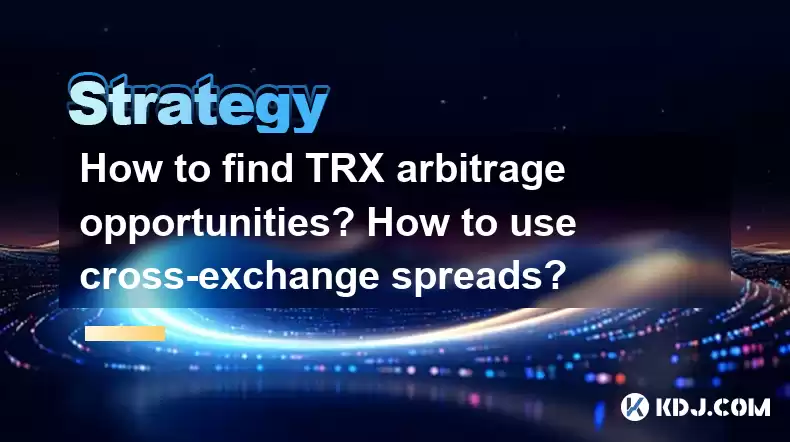-
 Bitcoin
Bitcoin $114400
1.32% -
 Ethereum
Ethereum $3499
2.20% -
 XRP
XRP $2.922
4.26% -
 Tether USDt
Tether USDt $0.0000
0.03% -
 BNB
BNB $752.6
1.53% -
 Solana
Solana $161.8
1.64% -
 USDC
USDC $0.9999
0.01% -
 TRON
TRON $0.3267
1.32% -
 Dogecoin
Dogecoin $0.1991
3.02% -
 Cardano
Cardano $0.7251
3.29% -
 Hyperliquid
Hyperliquid $38.32
3.36% -
 Stellar
Stellar $0.3972
7.58% -
 Sui
Sui $3.437
2.74% -
 Chainlink
Chainlink $16.29
3.65% -
 Bitcoin Cash
Bitcoin Cash $545.3
3.70% -
 Hedera
Hedera $0.2482
7.49% -
 Ethena USDe
Ethena USDe $1.001
0.03% -
 Avalanche
Avalanche $21.40
2.02% -
 Toncoin
Toncoin $3.579
1.56% -
 Litecoin
Litecoin $109.3
2.20% -
 UNUS SED LEO
UNUS SED LEO $8.951
-0.18% -
 Shiba Inu
Shiba Inu $0.00001220
2.75% -
 Polkadot
Polkadot $3.613
2.99% -
 Uniswap
Uniswap $9.173
3.78% -
 Monero
Monero $302.6
2.62% -
 Dai
Dai $0.0000
0.00% -
 Bitget Token
Bitget Token $4.320
1.52% -
 Pepe
Pepe $0.00001048
3.40% -
 Cronos
Cronos $0.1314
4.33% -
 Aave
Aave $259.4
3.54%
How to find TRX arbitrage opportunities? How to use cross-exchange spreads?
TRX arbitrage involves buying low on one exchange and selling high on another, using tools like price aggregators and bots to spot profitable cross-exchange spreads.
Apr 28, 2025 at 07:08 pm

Introduction to TRX Arbitrage
Arbitrage is a trading strategy that involves buying an asset on one market and selling it on another to profit from the price difference. When it comes to TRX (Tron), arbitrage opportunities can arise from the price discrepancies across different cryptocurrency exchanges. By leveraging these cross-exchange spreads, traders can potentially earn profits with relatively low risk. This article will guide you through the process of finding TRX arbitrage opportunities and utilizing cross-exchange spreads effectively.
Understanding Cross-Exchange Spreads
Cross-exchange spreads refer to the differences in the price of TRX on various exchanges. These spreads can occur due to several factors such as liquidity differences, regional demand, and varying trading volumes. To effectively utilize these spreads for arbitrage, you need to identify where the price of TRX is lower on one exchange and higher on another.
For instance, if TRX is trading at $0.06 on Exchange A and $0.065 on Exchange B, there is a spread of $0.005. By buying TRX on Exchange A and selling it on Exchange B, you can potentially earn a profit of $0.005 per TRX, minus any transaction fees.
Tools and Resources for Identifying Arbitrage Opportunities
To find TRX arbitrage opportunities, you need the right tools and resources. Here are some essential ones:
- Cryptocurrency Price Aggregators: Websites like CoinGecko and CoinMarketCap provide real-time prices of TRX across multiple exchanges. They help you quickly identify where the price discrepancies exist.
- Arbitrage Bots: Automated tools like Gimmer or HaasOnline can scan multiple exchanges and alert you to potential arbitrage opportunities. These bots can execute trades automatically, but be cautious of their fees and reliability.
- Spreadsheets and Manual Tracking: For those who prefer a hands-on approach, using a spreadsheet to manually track TRX prices on different exchanges can be effective. This method requires more time and effort but gives you full control over your arbitrage strategy.
Step-by-Step Guide to Executing TRX Arbitrage
To execute TRX arbitrage using cross-exchange spreads, follow these detailed steps:
- Identify the Spread: Use a price aggregator to find where TRX is trading at a lower price on one exchange and a higher price on another.
- Calculate Potential Profit: Subtract the transaction fees from both exchanges from the spread to determine your potential profit per TRX.
- Fund Your Accounts: Ensure you have sufficient funds in both exchanges to cover the purchase and sale of TRX. This may involve transferring funds between exchanges, which can take time.
- Execute the Trade:
- Buy TRX on the exchange where the price is lower.
- Transfer TRX to the exchange where the price is higher. Be mindful of withdrawal and deposit fees.
- Sell TRX on the exchange where the price is higher.
- Monitor and Adjust: Keep an eye on the prices and be ready to adjust your strategy if the spread narrows or if market conditions change.
Managing Risks in TRX Arbitrage
While TRX arbitrage can be profitable, it comes with its own set of risks. Here are some key considerations:
- Transaction Fees: High fees can eat into your profits. Always calculate the net profit after accounting for all fees.
- Transfer Times: Delays in transferring TRX between exchanges can cause you to miss out on the arbitrage opportunity if the spread closes.
- Market Volatility: Cryptocurrency markets can be highly volatile. A sudden price movement can turn a profitable arbitrage opportunity into a loss.
- Exchange Reliability: Ensure that the exchanges you are using are reputable and have a history of reliable service. Issues with one exchange can disrupt your arbitrage strategy.
Practical Example of TRX Arbitrage
Let's walk through a practical example of TRX arbitrage using cross-exchange spreads:
- Scenario: TRX is trading at $0.06 on Exchange A and $0.065 on Exchange B. The spread is $0.005.
- Fees: Exchange A has a trading fee of 0.1% and a withdrawal fee of 1 TRX. Exchange B has a trading fee of 0.2%.
- Calculation:
- Cost to Buy on Exchange A: $0.06 per TRX + 0.1% fee = $0.06006 per TRX.
- Cost to Withdraw from Exchange A: 1 TRX per withdrawal.
- Revenue from Selling on Exchange B: $0.065 per TRX - 0.2% fee = $0.06487 per TRX.
- Net Profit per TRX: $0.06487 - $0.06006 = $0.00481 per TRX.
- Total Cost for 1000 TRX: $0.06006 * 1000 + 1 TRX = $60.06 + $0.06 = $60.12.
- Total Revenue for 1000 TRX: $0.06487 * 1000 = $64.87.
- Net Profit for 1000 TRX: $64.87 - $60.12 = $4.75.
In this example, you would make a net profit of $4.75 by buying 1000 TRX on Exchange A and selling it on Exchange B.
Frequently Asked Questions
Q: Can I use arbitrage bots for TRX arbitrage?
A: Yes, arbitrage bots can be used for TRX arbitrage. They can scan multiple exchanges and execute trades automatically. However, be aware of the fees associated with these bots and ensure they are reliable before using them.
Q: How do I handle the risk of price changes during TRX transfers between exchanges?
A: To mitigate the risk of price changes during transfers, you can use faster withdrawal methods if available, or consider the potential price movement in your profit calculations. Always have a contingency plan in case the market moves against you.
Q: Are there any legal considerations for TRX arbitrage?
A: Legal considerations for TRX arbitrage can vary by jurisdiction. It's important to check the regulations in your country regarding cryptocurrency trading and arbitrage. Ensure you comply with all relevant laws and regulations.
Q: How often do TRX arbitrage opportunities occur?
A: The frequency of TRX arbitrage opportunities can vary based on market conditions, liquidity, and other factors. Opportunities may be more frequent during periods of high volatility or when there are significant price discrepancies between exchanges. Regular monitoring of prices is essential to catch these opportunities.
Disclaimer:info@kdj.com
The information provided is not trading advice. kdj.com does not assume any responsibility for any investments made based on the information provided in this article. Cryptocurrencies are highly volatile and it is highly recommended that you invest with caution after thorough research!
If you believe that the content used on this website infringes your copyright, please contact us immediately (info@kdj.com) and we will delete it promptly.
- Altcoin Rotation, Smart Money, and Investment Trends: What's the Deal?
- 2025-08-04 12:30:11
- Crypto, Pi Network, Movement: Is Pi Coin the Next Big Thing?
- 2025-08-04 12:30:11
- Bitcoin, Metaplanet, and Institutional Confidence: A New Era?
- 2025-08-04 12:50:12
- XRP Price, Ripple CTO, and Tokenized Finance: A New York Minute on Crypto
- 2025-08-04 12:50:12
- Pi Coin: Future Access or Early Adoption Blues?
- 2025-08-04 12:55:11
- Ethereum Liquidations Rock Crypto Market: What's a New Yorker to Do?
- 2025-08-04 13:00:17
Related knowledge

How to avoid common crypto investment mistakes?
Jul 13,2025 at 01:35am
Understanding the Risks of Crypto InvestmentInvesting in cryptocurrency can be highly rewarding, but it also comes with significant risks. One of the ...

What is a long-short crypto strategy?
Jul 15,2025 at 10:56am
Understanding the Basics of a Long-Short Crypto StrategyA long-short crypto strategy is an investment approach where traders simultaneously take long ...

What is a long-short crypto strategy?
Jul 11,2025 at 01:28pm
Understanding the Basics of Long-Short Crypto StrategyA long-short crypto strategy is an investment approach where traders take both long and short po...

How to use the RSI indicator for crypto?
Jul 12,2025 at 03:56pm
Understanding the RSI Indicator in Cryptocurrency TradingThe Relative Strength Index (RSI) is a momentum oscillator used to measure the speed and chan...

Is copy trading a good strategy for crypto beginners?
Jul 12,2025 at 08:28am
Understanding Copy Trading in the Cryptocurrency MarketCopy trading is a strategy where novice traders replicate the trades of experienced investors a...

How to build a crypto portfolio with $1000?
Jul 13,2025 at 08:14pm
Understanding the Basics of Cryptocurrency InvestmentBuilding a crypto portfolio with $1000 starts with understanding the fundamentals of cryptocurren...

How to avoid common crypto investment mistakes?
Jul 13,2025 at 01:35am
Understanding the Risks of Crypto InvestmentInvesting in cryptocurrency can be highly rewarding, but it also comes with significant risks. One of the ...

What is a long-short crypto strategy?
Jul 15,2025 at 10:56am
Understanding the Basics of a Long-Short Crypto StrategyA long-short crypto strategy is an investment approach where traders simultaneously take long ...

What is a long-short crypto strategy?
Jul 11,2025 at 01:28pm
Understanding the Basics of Long-Short Crypto StrategyA long-short crypto strategy is an investment approach where traders take both long and short po...

How to use the RSI indicator for crypto?
Jul 12,2025 at 03:56pm
Understanding the RSI Indicator in Cryptocurrency TradingThe Relative Strength Index (RSI) is a momentum oscillator used to measure the speed and chan...

Is copy trading a good strategy for crypto beginners?
Jul 12,2025 at 08:28am
Understanding Copy Trading in the Cryptocurrency MarketCopy trading is a strategy where novice traders replicate the trades of experienced investors a...

How to build a crypto portfolio with $1000?
Jul 13,2025 at 08:14pm
Understanding the Basics of Cryptocurrency InvestmentBuilding a crypto portfolio with $1000 starts with understanding the fundamentals of cryptocurren...
See all articles

























































































